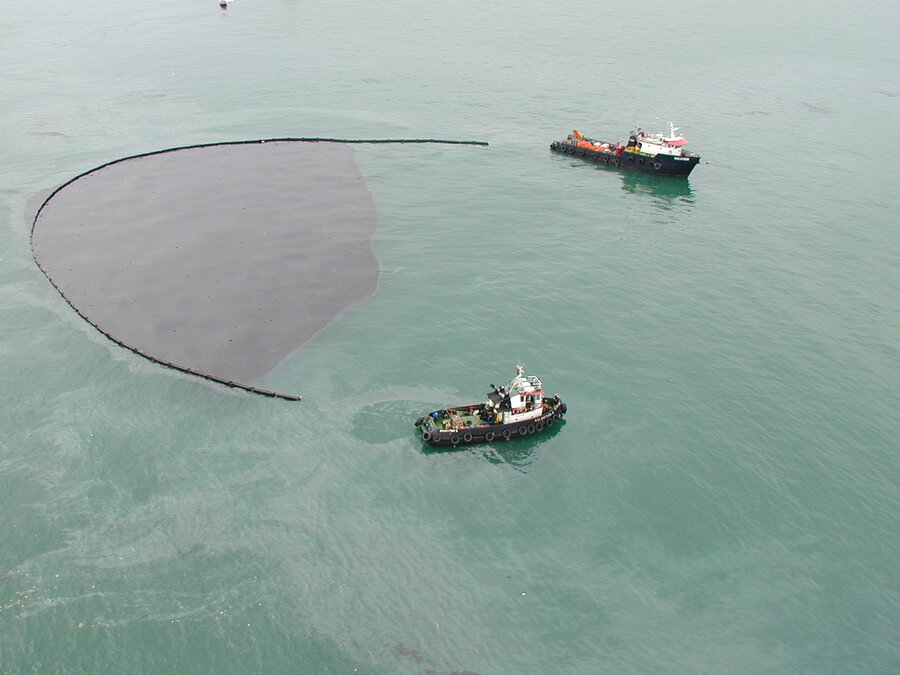Chemical Fate and Effects

Whether solid, liquid or gaseous in form, when chemicals are spilled they can behave in a number of different ways.
It is important to understand this behaviour so that health and safety implications can be recognised and the most effective response method can be decided. In simple terms, a substance follows one or a combination of the following pathways when spilled:
- Dissolve
- Evaporate
- Float
- Diffuse
- Condense
- Sink
The behaviour and eventual 'fate' of a substance is therefore determined by the properties of volatility, solubility and density and in turn, the nature of the hazard presented by the substance (toxicity, flammability, reactivity, explosive, corrosive, etc).
Effects on Marine Resources
The effects of a chemical released into the marine environment will depend on a number of factors such as the toxicity of the material, the quantities involved and the resulting concentrations in the water column, the length of time organisms are exposed to that concentration and the level of tolerance of the organisms (which varies greatly among different species and during their life cycles).
Even if the concentration of HNS is below what would be considered lethal, sub-lethal concentrations can still lead to longer term impacts within the marine environment. For example, chemically-induced stress can reduce the overall ability of an organism to reproduce, grow, feed or otherwise function normally within a few generations.
The characteristics of some HNS, particularly heavy metals and some organic compounds, can result in an accumulation of the substances within organisms themselves, a phenomenon known as bio-accumulation. Sessile marine species that filter seawater for food, such as bivalve molluscs, are particularly vulnerable to this problem. Subsequent bio-magnification may also occur if the chemicals can be passed on, following the food chain up to higher predators.
Advisory Documents and Data
There are several sources of data regarding the fate and effects of commonly transported chemicals and numerous national databases incorporating individual chemical risk profiles.
GESAMP (the Group of Experts on Scientific Aspects of Marine Environmental Protection), an advisory body to the United Nations, has published evaluations of the effects of substances transported by ships on the marine environment. This easily accessible and simple guide can provide an important first step in evaluating the severity of a chemical spill. The properties of the chemicals have been evaluated in relation to a number of predefined effects:
- Bioaccumulation
- Biodegradation
- Acute and chronic toxicity on marine organisms
- Long term health effects on humans
- Effects on marine wildlife, and on benthic habitats
- Effect on other marine resources
Data regarding effects of individual HNS cargoes can also be obtained from substance specific Safety Data Sheets (SDS) which summarise the various hazards associated with each substance. SDS commonly provide the following information:
| 1. Identification | 9. Physical & chemical properties |
| 2. Hazard(s) identification | 10. Stability & reactivity |
| 3. Composition/ingredients | 11. Toxicological information |
| 4. First-aid measures | 12. Ecological information |
| 5. Fire-fighting measures | 13. Disposal considerations |
| 6. Accidental release measures | 14. Transport information |
| 7. Handling & storage | 15. Regulatory information |
| 8. Exposure controls/personal protection | 16. Other information |
